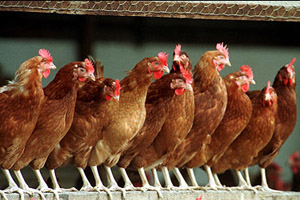Welfare not directly linked to system choice

The choice for a free range production system does not automatically lead to a better welfare situation for laying hens. This is the conclusion of David Burch, Octagon Services when writing about management in the Veterinary Record Journal.
According to Burch, research shows that the highest hen mortality was found in free-range and organic flocks, closely followed by barns; almost double that of caged flocks. The mortality of hens in cages over a 52-week laying period was 5.39% and the mortality in free-range hens was 9.52%, 77%.
The variability in flock mortality or standard deviation (sd) was also higher, with cages at 3.05% and free range at 7.41%, a 143% increase.
This comes as no surprise, free range hens come in to contact with more potential disease sources. Outdoor risks include a variety of bacteria, such as Salmonella, Clostridium and Brachyspira species, protozoa such as Eimeria species and helminth eggs. Free-range hens have a propensity to drink from potentially contaminated puddles, continues Burch, aiding the transmission of infections.
In a recent survey in Great Britain (Burch and others 2009), free-range flocks developed Brachyspira species infections, the cause of avian intestinal spirochaetosis, as early as 22 weeks of age, soon after point of lay at 20 weeks of age. Caged flocks became infected with Brachyspira species much later, at 36 weeks of age. Free-range flocks were also statistically significantly associated with poor performance (less than 285 eggs per hen housed) in comparison with caged flocks.
Not all free-range flocks are bad, concludes Burch. All systems, if they are well managed and remain disease free, can have low mortality. However, those systems that have outdoor access have additional management difficulties, such as the weather, predators, lack of biosecurity and direct contact with faecal material, which makes the responsibilities of management even greater and more necessary, if they truly want to be considered more ‘welfare friendly’.













